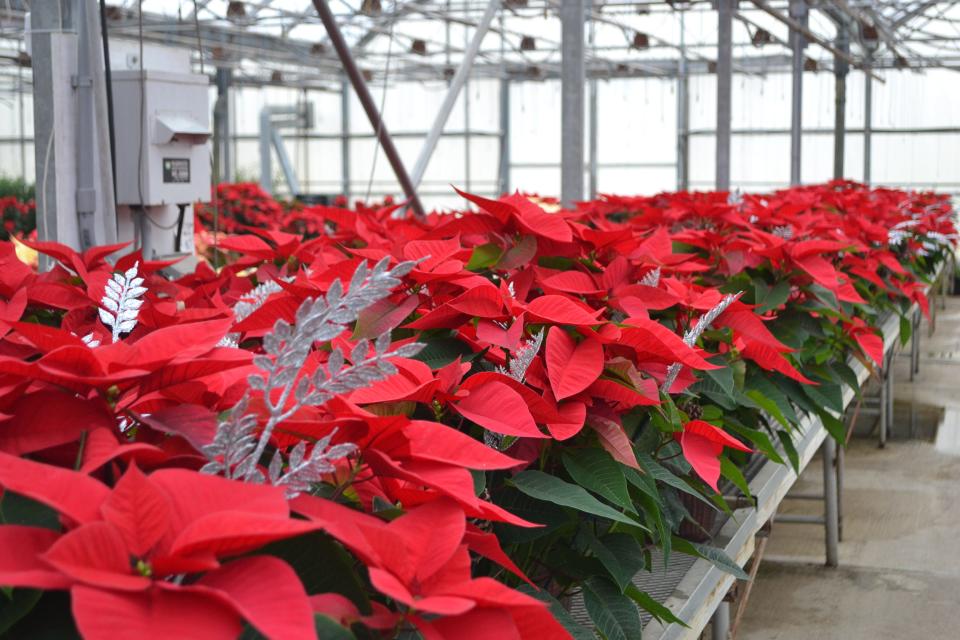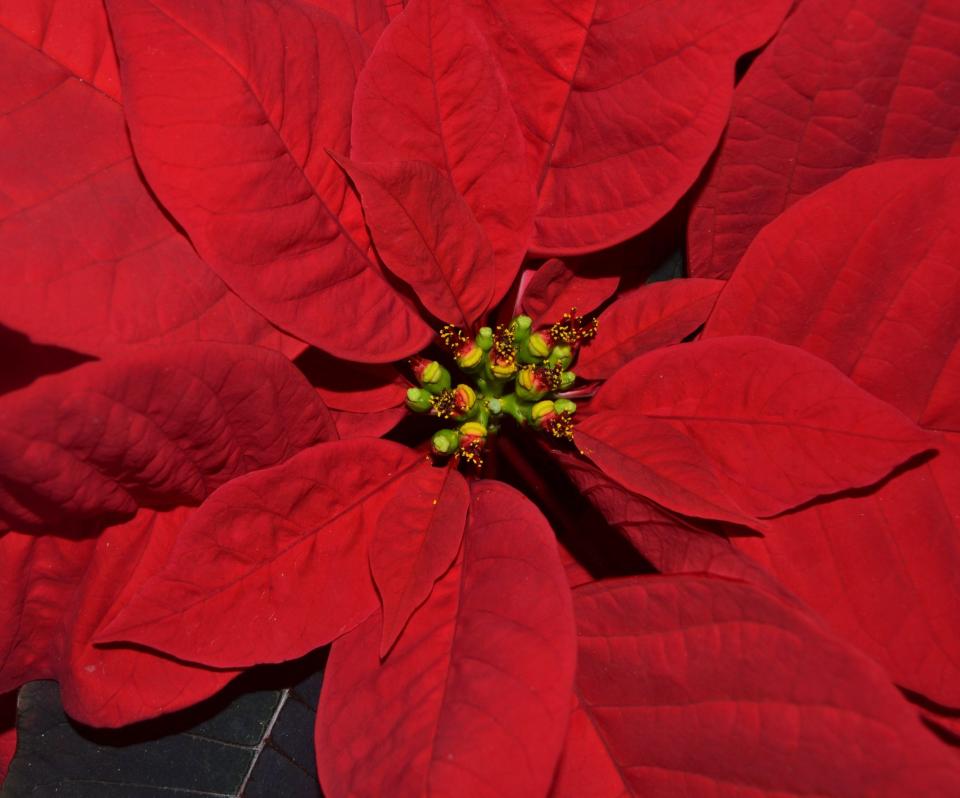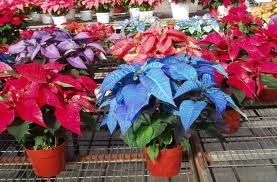A Stroll Through the Garden: Getting a popular Christmas plant to rebloom starts early
Merry Christmas everyone! I guess this is a perennial question. A friend from the pool who is an Orlando snowbird, another friend from a few years ago, and my radio show host asked me about how to get a poinsettia to come back into bloom.
There are so many different types of poinsettias out there that can fit most decors. Have you ever wondered what it takes to get your poinsettia or Euphorbia pulcherrima to come into bloom? Without these beautiful leaves one would not have much of anything.
My folks raised these plants for a very long time. I remember the 24-foot-tall pyramid of red poinsettias we made for a winter program one year. Let me know if you remember the event. There is a magic to these plants on a number of levels. When you look at a poinsettia, the bloom is actually a leaf and not a petal. Flowers on this plant are actually the tiny yellow structures at the end of the stems. Would you have guessed that tiny yellow structure was actually the flower?

Poinsettias are a North American native. Joel Poinsett, the former ambassador to Mexico during the John Quincy Adams administration, brought the poinsettia to the United States as cuttings to his greenhouse in South Carolina in the 1820s. A friend of Poinsett, John Bartram, took this new plant and raised it in 1828. In June of the following year, Bartram exhibited this new euphorbia at the Philadelphia Flower Show at the first exhibition put on by the Pennsylvania Horticultural Society. Since then, we have adopted this plant as the best-known Christmas flower in the United States that growers have had a chance to modify and improve for color. The poinsettia is also the best-selling potted plant each year; 70 million pots of poinsettia come into bloom and are sold in the six-week period before Christmas.
The importance of darkness
Knowing that poinsettias are from Mexico will help us get these leaves to bloom again. You are going to need 12 hours of darkness starting on Oct. 1. We need to keep this date in mind to get your poinsettia to come back into bloom next year. This will fool this photo-periodic sensitive plant into thinking that your plant is back in Mexico and will start preparing to come into bloom.
When I took the greenhouse management class at The Ohio State University–Agriculture and Technical Institute, Dr. McMahon taught us about the consequences of photo-periodism in the form of DIF. Simple term but complex in implementation. On a commercial basis, you have to be able to roll out a dark cover over the beds where you are growing the poinsettias, all with a specific time in mind. In three weeks you will see color developing in the leaves. For those of us trying to do this at home, we need to have a spot in our closet to get them to turn colors. We need patience to understand that this is a three-month process. The top leaf of the poinsettia produces a pigment called bracts, which are the leaves that surround the flowers. Normally they are white. In our light-polluted living, always having lights on, creating 12 hours of darkness each day to cause the bract enzyme to turn red is an issue. Shade clothes and timers are used in the greenhouse for this. Even in Mexico, which we are trying to imitate, the shortest days are around Christmas, which causes the enzyme to change the pigment red over green.

To help the poinsettia rebloom, you need to start by cutting back the plant to about 6 inches approximately three months before you start the light treatment. Then stop watering it for about two weeks or until the leaves start falling off. There is usually a small drought that causes the plant to go into dormancy in Mexico in the fall.
At this point we begin the blackout treatment we have talked about. The regimen is to allow the plant to be in exactly 12 hours of complete darkness. As this time comes to an end, you need to remove the plant from the dark to the light for another 12 hours and repeat until you see the bracts changing. After a few weeks of doing this, you will see results that your efforts of moving the plant from dark to light. One needs either a blackout room or a blackout curtain. Consistency is what is critical to turn the leaves red.
As with any plant, fertilizing with proper nutrients is critical. A balanced water-soluble fertilizer should be applied every two weeks. Follow the basic directions on the fertilizer. Over fertilizing can be as much of a problem as under fertilizing.

Don’t leave your poinsettia in drafts. Remember to water your poinsettia after you have taken it out of its sleeve, putting it where you can allow the water to drain. Take normal care of your plant. Like my folks, you may be able to have your poinsettia for years.
This Christmas season has been unusual in that I have felt extra cold lately. Don’t know why but I have. One thing that does warm me up is that I know tropical plants like the poinsettia can give me warm thoughts.
Hope all of you have had a good season. Try to extend your gardening in some form. If you have any gardening problems indoors or outdoors, you can e-mail me at ericlarson546@yahoo.com. My website is ohiohealthyfoodcoop.org. Thank you for participating in our column.
Eric Lawson of Jeromesville is a veteran landscaper and gardening enthusiast and a founding board member of the Ohio Chapter of Association of Professional Landscape Designers.
This article originally appeared on Mansfield News Journal: The magic of the poinsettia and getting it to rebloom

